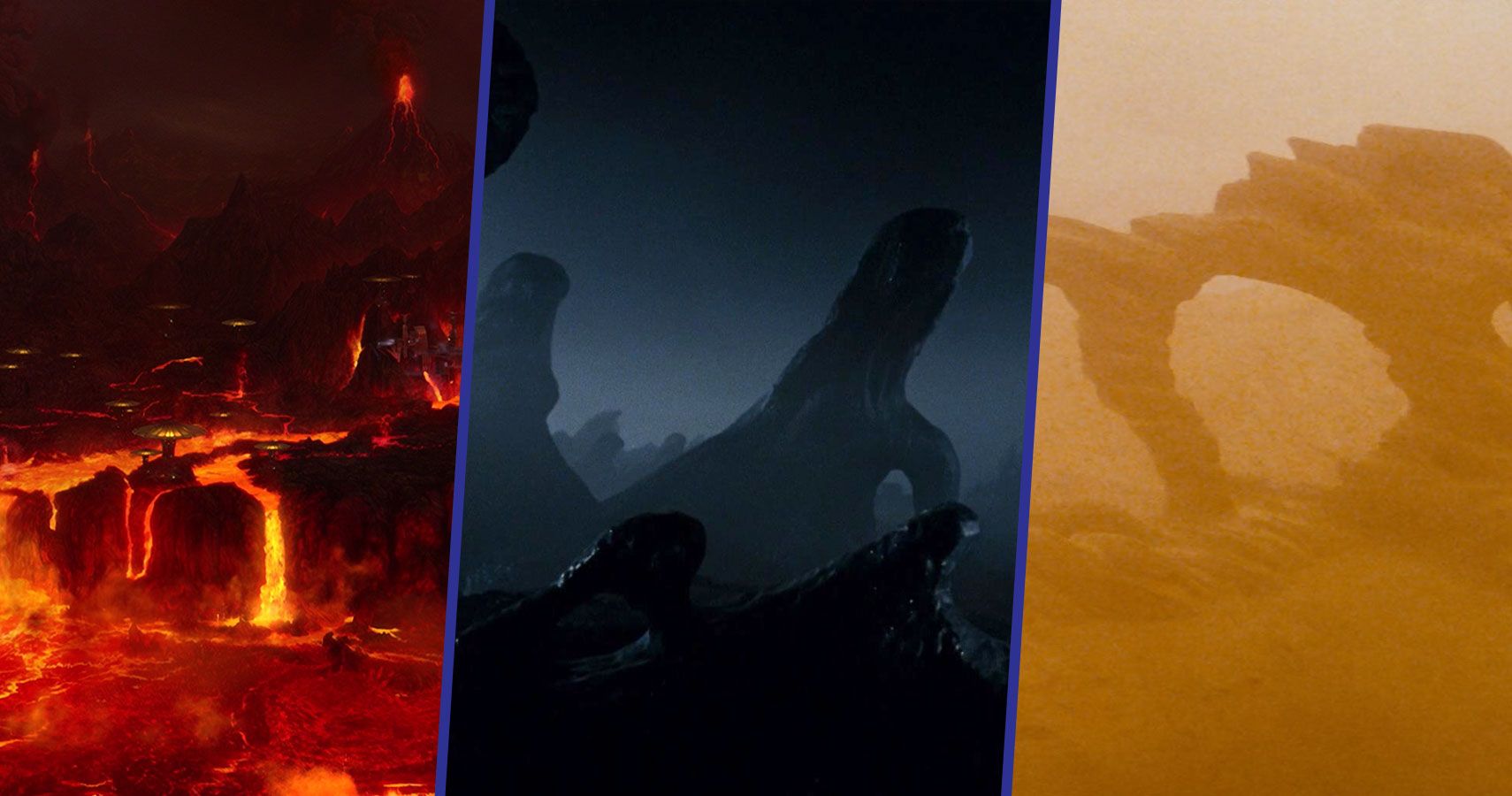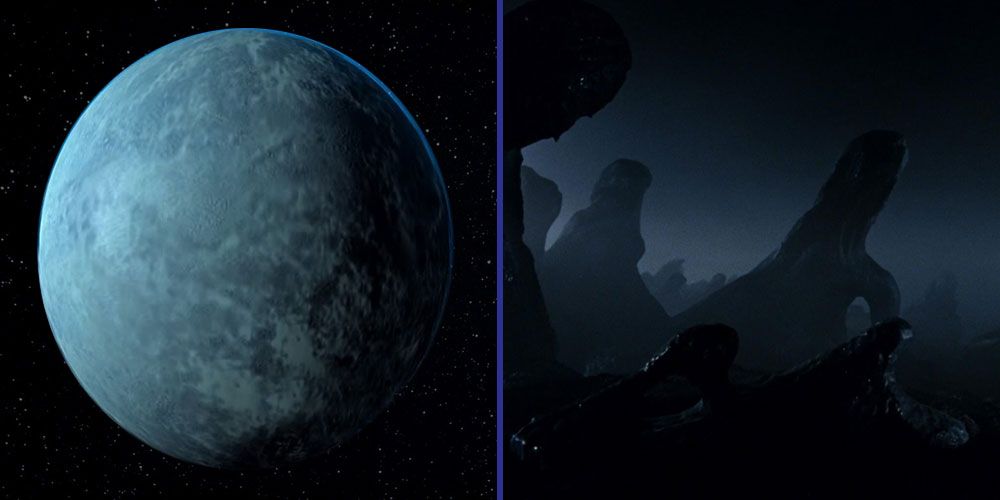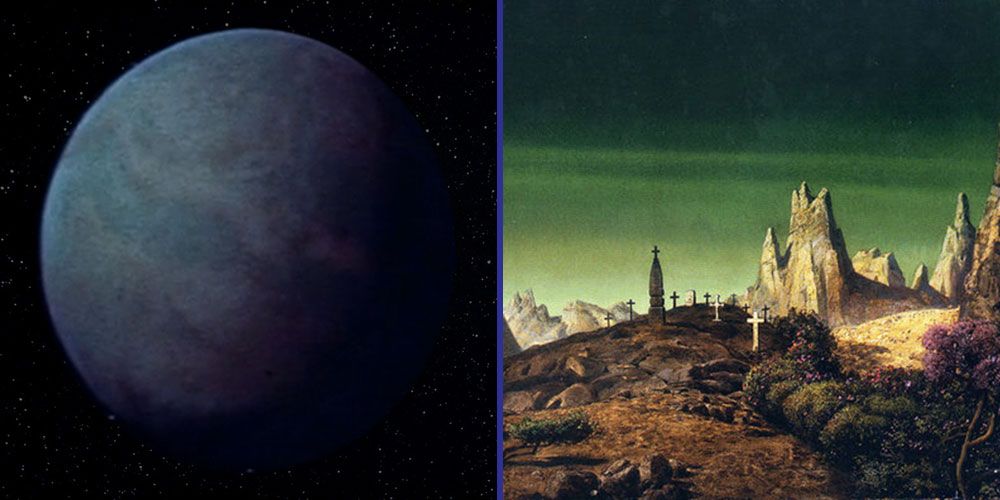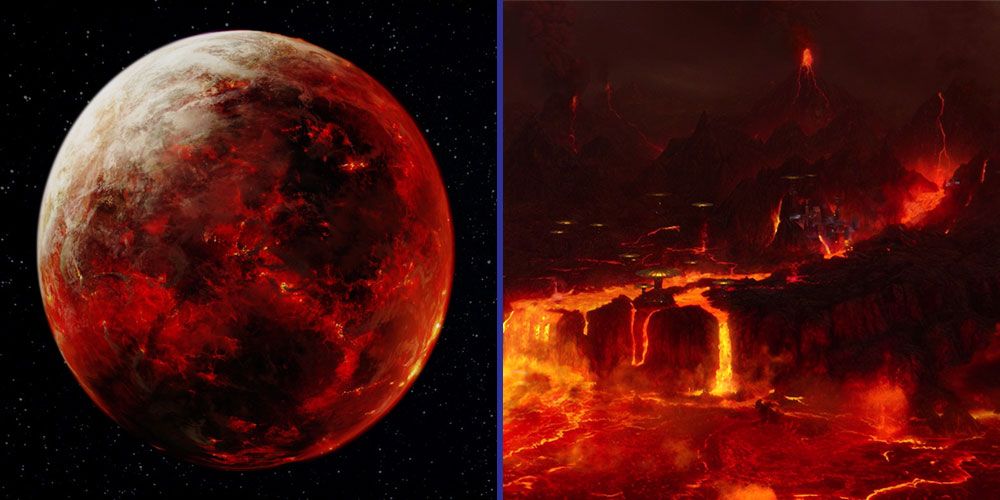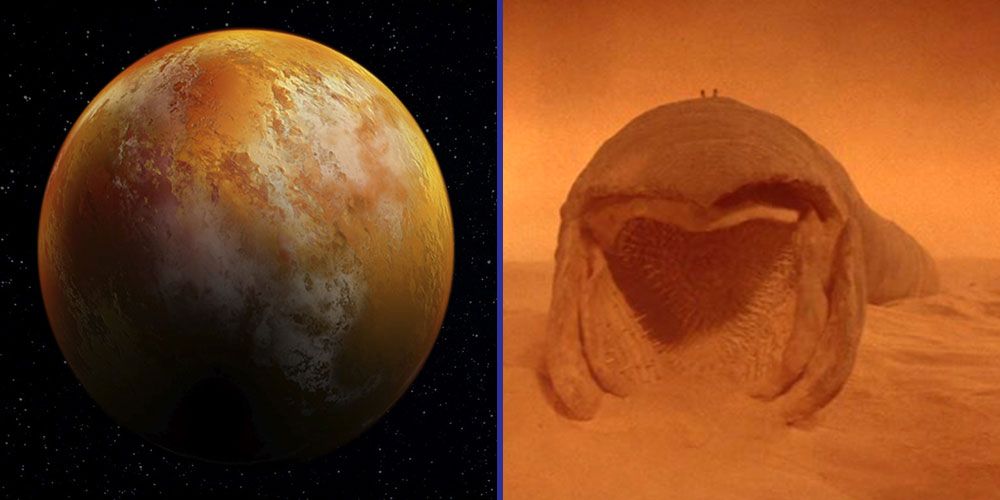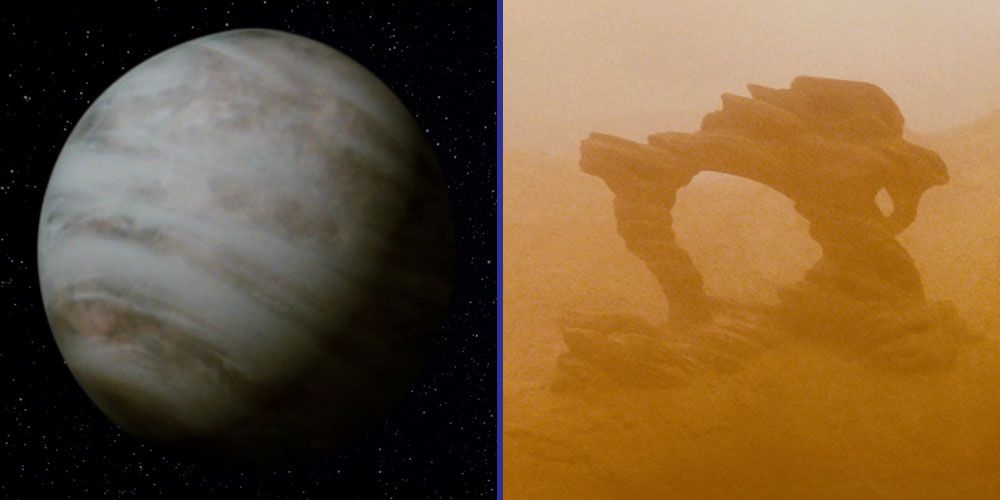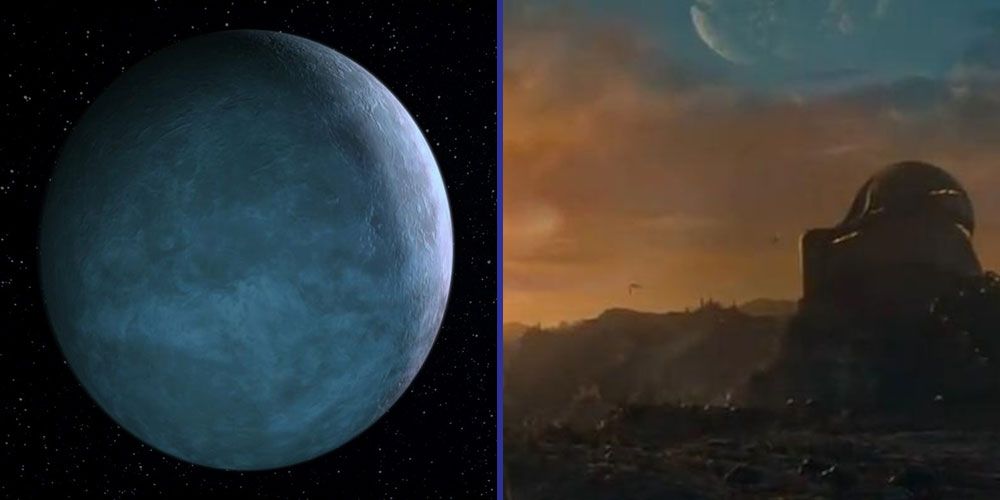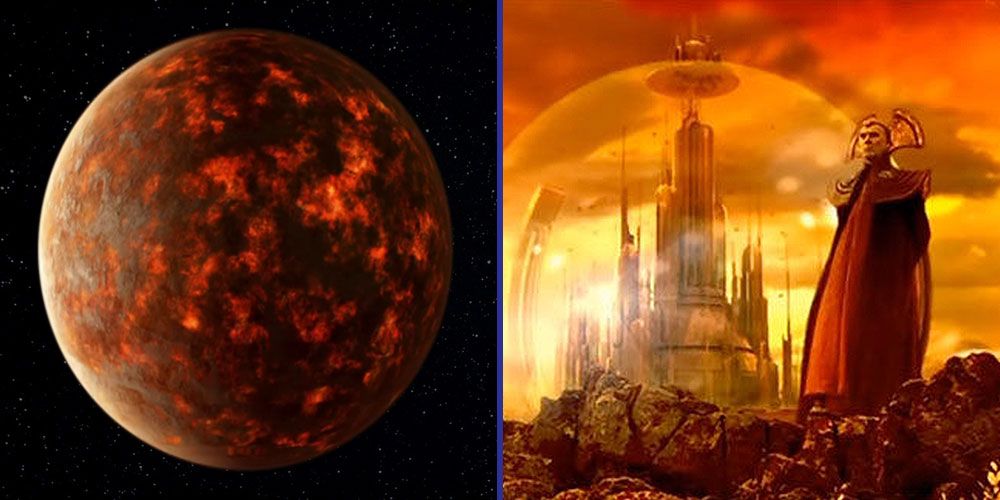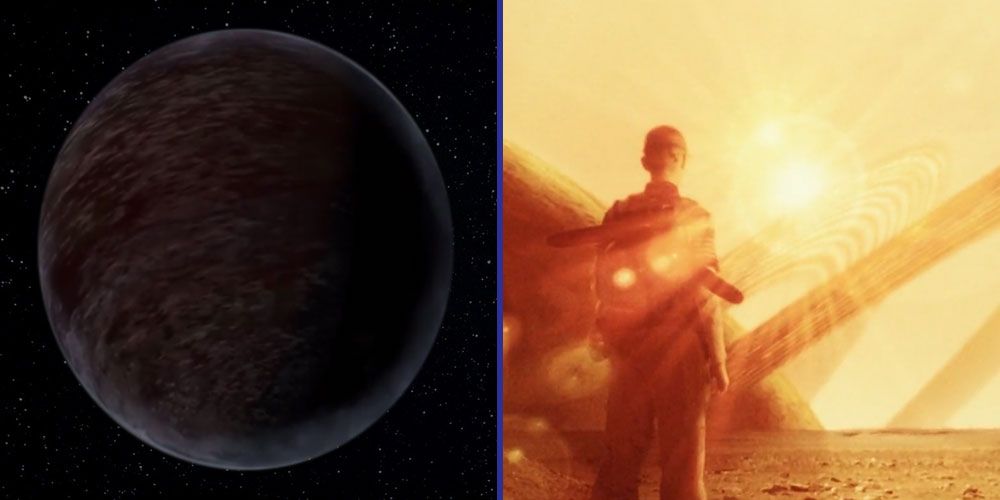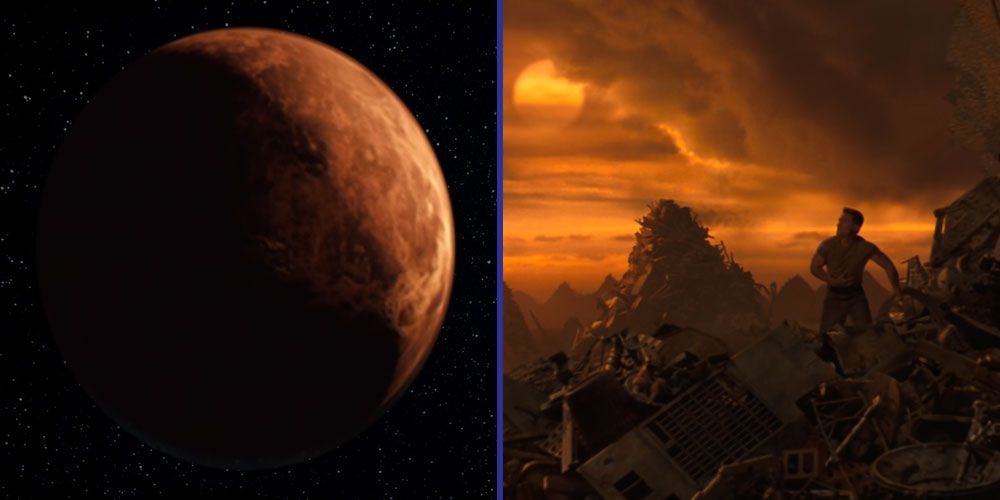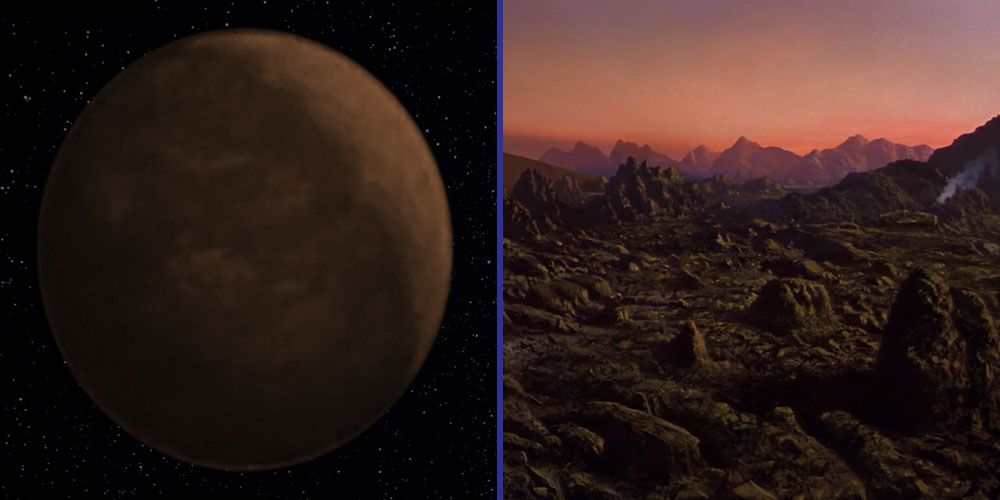Science fiction is all about exploring the wonders of the future, from technology, to new alien races and worlds. It's that last one that can go either way, however. For every lush, beautiful planet like Avatar's Pandora, there's a barren, merciless one with a thousand unpleasant ways to die.
Make sure to keep these sci-fi planets off your list of travel destinations. In fact, don't even venture into the same solar system where they reside! Here's 10 of the most merciless, unforgiving and dangerous planets ever committed to science fiction film and television.
LV-426 (Aliens)
This small, near-primordial planetoid gained notoriety when Weyland-Yutani ordered the commercial towing vehicle Nostromo to set down and answer a distress beacon of extraterrestrial origin. What they found on the surface was a crashed derelict ship containing mysterious alien eggs in hibernation.
The planet itself was inhospitable, lifeless and deadly. Later, the company would set up an atmospheric processing plant on LV-426, just miles away from the crashed derelict. Under company orders from Carter Burke, the colonists investigated the derelict and were quickly overrun by the xenomorph menace. It's just one more reason to give LV-426 a wide berth.
Altair IV (Forbidden Planet)
Altair IV was the site of an Earth expedition set up to investigate the advanced technology of a long-extinct race known as the Krell. Under the guidance of Dr. Edward Morbius, the team began researching the technology and experimenting with it, to their own detriment. Morbius' subconscious mind was awakened by the Krell supercomputers, causing his primordial id to rise to the surface and manifest as a horrifying monster which killed the rest of the colonists.
The planet seemed barren and lifeless, save for animals kept by Morbius' daughter Altaira. The leftover Krell technology was a virtual Pandora's Box that nobody would ever want to crack open.
Mustafar (Star Wars: Episode III - Revenge Of The Sith)
The notion of vacationing on a volcanic planet seems counterproductive, to say the least. However, Mustafar played a significant role in the events of the Star Wars films. First, it served as a base of operations for Separatist forces during the Clone Wars. Later, it would become the backdrop for a massive lightsaber duel between Obi-Wan Kenobi and Anakin Skywalker, the latter of which would be permanently scarred and crippled. His subsequent transition to Darth Vader included setting up his castle on Mustafar, as a reminder of where he was "born."
Mustafar started out as a paradise teeming with life, but was later thrown out of orbit by an ancient artifact of great power, which devastated the surface. The Sith would later make Mustafar the site of a shrine, further permeating the planet with dark side energy.
Arrakis (Dune)
Desert planets rarely get much love, and Arrakis is no exception. If it weren't for the presence of the naturally occurring melange, or "spice" as it is regularly referred to, the planet would have no value, whatsoever. It most certainly lives up to its Dune namesake, in more ways than one.
Despite its harsh climate, lack of precipitation and ravenous, gigantic sandworms, Arrakis is a literal gold mine thanks to spice, which prolongs lifespans, increases vitality, and allows for interstellar travel through space and time. What a shame it can only be found on such a hellish planet as Arrakis.
Ceti Alpha V (Star Trek II: The Wrath Of Khan)
In the classic Star Trek episode "Space Seed," the villainous Khan and the 20th century crew of the Botany Bay attempted to hijack the Enterprise, but their plan was foiled by Captain Kirk. To compromise, Kirk offered them a chance to settle on Ceti Alpha V, a savage yet habitable planet.
Following the destruction of neighboring planet Ceti Alpha VI, its orbit shifted, which wreaked havoc on the surface, turning it into a barren wasteland. This resulted in the death of Khan's wife and several members of his crew, which made him vengeful.
Krypton (Superman)
While the idea of visiting Superman's home world seems wonderful, the reality was far less pleasant. Krypton had suffered through much turmoil during its existence, not the least of which was political infighting and lack of decisiveness brought on by decades of complacency.
Beyond that, the planet itself was host to a heavy degree of extremely dangerous life forms which threatened the lives of the Kryptonians, forcing them to rely on technology to survive. This would later lead to the creation of Doomsday, the villain who successfully killed the Man of Steel.
Gallifrey (Doctor Who)
Gallifrey's past is a lot like the Roman Empire. It was both elegant, and vulgar; classy, yet corrupt. The behavior of the Time Lord race had most to do with Gallifrey's notorious reputation, as they sat high on the galactic ladder while neglecting their own stagnating culture. One of the worst displays of Time Lord corruption was the infamous Death Zone, where the Tomb of Rassilon was found.
Their behavior would soon come back to haunt them when they managed to antagonize the Daleks, which led to the Time War, a devastating conflict that not only destroyed Gallifrey, but wrought mayhem upon many other worlds and races.
Planet Number Two (Pitch Black)
One of the most inhospitable planets in all of sci-fi history is undoubtedly "Planet Number Two," as described in the film Pitch Black. After crash-landing on the planet following a meteorite strike, the crew of the Hunter-Gratzner finds themselves stranded in a desolate desert environment with three suns that scorch the planet with continuous daylight.
If this weren't bad enough, the crew soon discover that the planet is home to an extremely lethal race of indigenous creatures which are sensitive to sunlight, and remain underground. That is, until a cyclic eclipse occurs which blocks out all three suns, plunging the planet into total darkness and allowing the creatures to roam free. A nightmare planet of Biblical proportions, to say the least.
Arcadia 234 (Soldier)
It seems obvious that humanity would eventually pick a planet to dump all their trash, and Arcadia 234 seems like the perfect spot. It's barren to start with, and devoid of life, save for a species of lethal snakes that claim the lives of a group of humans who crash-landed on the planet years before.
One can only imagine the lack of hygiene, and the sheer amount of rot and disease that would permeate a planet of junk. If anyone is interested in visiting such a place, they might first consider getting a tetanus shot.
Fyrine IV (Enemy Mine)
When the human Willis Davidge and the Drac known as Jeriba Shigan crash-landed on Fyrine IV, they were forced to set aside their mutual hatred of one another rather quickly, and cooperate in order to survive. Fyrine IV is one of the most dangerous planets in sci-fi history, thanks to its desolate geology, inhospitable climate and a tendency to get struck by lethal meteor showers.
And then there's the local fauna consisting of grotesque, terrifying subterranean creatures who protrude their barb-like tongues through the sand to grab their prey and pull them underneath. With so many ways to die (unpleasantly), Fyrine IV should be dead last on everyone's list of go-to spots. In fact, just scratch it off completely.

